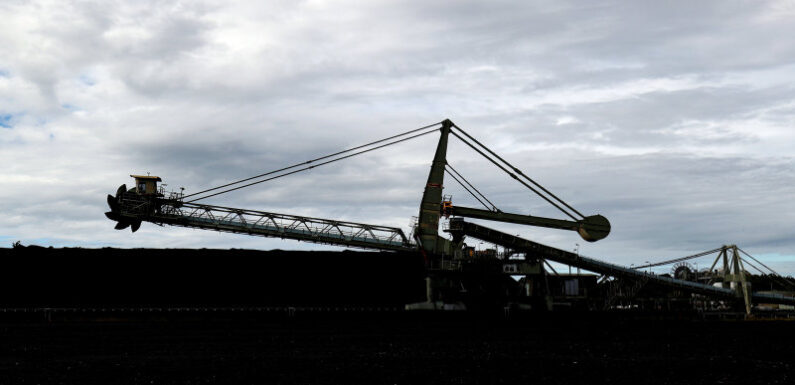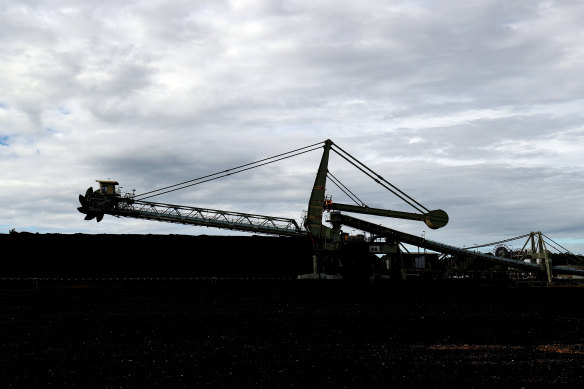
Save articles for later
Add articles to your saved list and come back to them any time.
The NSW Climate and Energy Minister’s announcement on Tuesday that the government would begin talks with Origin Energy to extend the life of the nation’s largest coal-fired power station, Eraring, beyond 2025 came as no surprise.
If there is one thing that climate and energy ministers can’t abide more than the threat of climate change it is the political risk of power shortages.
A stockpile of coal at Eraring power station.Credit: Bloomberg
In February last year Eraring’s owner, Origin Energy, announced it was considering closing the power station in 2025. As with much of the nation’s ageing fleet of coal stations, it was becoming more expensive to maintain and the electricity it created was being undercut by new renewables.
But now the transition to renewable energy is being slowed by shortages of capital, materials, labour and even will, as some local communities begin to push back against the development of powerlines and wind turbines.
As a result, the Australian Energy Market Operator warned that supply might be tight for a time after Eraring’s closure should some key renewable developments not be ready in time. Just to be sure, the new Labor government ordered a consultant to “kick the tyres” of the state’s supply, as Climate and Energy Minister Penny Sharpe put it.
Yes, supply might be tight, the report dutifully confirmed and, yes, the government should “engage with Origin” about a potential extension.
What was a little surprising about Sharpe’s announcement was how vague it was. Sharpe could not say, for example, if it did want Eraring to stay open, or how long it might stay open for. Nor could she say how much the taxpayer might be expected to pony up to keep Eraring on life support.
According to Origin, it costs between $200 million and $250 million a year in maintenance to keep Eraring open. But this is before a lump of coal has been purchased. Since the government’s $120 a tonne cap on the price of coal expires in 2024, we can expect the cost to leap after that. Once coal is factored in, the cost of keeping Eraring open could surge to billions over two or three years.
Critics of the life support proposal, unhelpfully nicknamed “coalkeeper” in some circles, suggest this is money that would be better spent on accelerating renewable projects, according to Amanda McKenzie, chief executive of the Climate Council.
“Putting money into an ageing, polluting coal station – that’s just money up in smoke. But if you put money into new renewable energy investments, whether it’s more rooftop solar or [bigger projects], that would be a much preferable investment because it provides value for a long period of time,” she says.
Whatever solution the government eventually comes up with might be more sophisticated than backing coal over renewables, or vice versa, says Tony Wood, who heads the Grattan Institute’s energy program.
The government may negotiate, for example, to cover the new increased cost of coal, rather than simply open the cheque book. Either way, he says, it is positive that Sharpe has been transparent, so far. The Victorian government is paying the life support bills for two of its plants, Yallourn and Loy Yang A, but has not yet declared how much it will cost taxpayers.
One thing is clear, keeping Eraring open will fill the atmosphere with a lot more greenhouse gases than would otherwise be the case. According to the energy transition consultancy Nexa Advisory, keeping Eraring open for two years extra would mean pumping 18.3 million tonnes of greenhouse gasses into the atmosphere. By comparison, the state’s total emissions in 2020 was 132.4 million tonnes.
Sharpe insists the state will keep its emissions reduction target of 50 per cent by 2030. Maybe, but that is not putting all that pollution back underground.
Get to the heart of what’s happening with climate change and the environment. Our fortnightly Environment newsletter brings you the news, the issues and the solutions. Sign up here.
Most Viewed in Environment
From our partners
Source: Read Full Article
